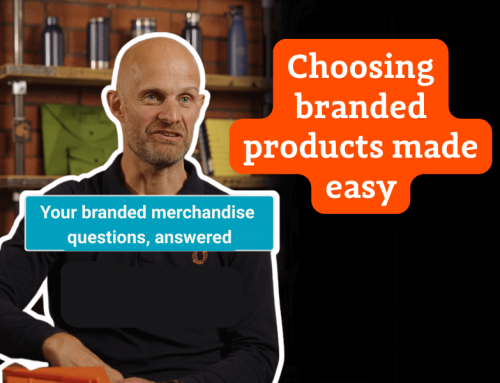
It is difficult to get your marketing just right, but once you do, the rewards can be profound. Balancing budgetary limitations against potential strategies, deciding on the right target audience, and determining if you can meet (or source) the creative demands of the project can all get overwhelming.
So let’s start with the top issue: your target. If you don’t know where you’re aiming, or if you choose to aim at the wrong target, you will not hit the goals your company needs. If that’s the case, you’re just throwing away money.
In many cases, companies market to individual consumers – called B2C, or business-to-customer marketing – but for many industries, their customers are actually other companies and organisations. That brings us into the realm of B2B marketing.

What is B2B Marketing?
B2B stands for ‘business to business.’ B2B marketing refers to any marketing efforts between two or more businesses or organisations.
B2B marketing differs in several ways from B2C marketing. For one thing, B2B marketing tends to be more straightforward and informational than B2C, because the main consideration for the business customer is the bottom-line impact on revenue. Most people rarely consider ROI when buying something, but for a business this is often the first – sometimes the only – consideration.
B2B commerce often involves buying committees, varied stakeholders, and a strong reliance on data and analytics.
Related post: What is Branding?
B2B vs B2C Marketing
These vary in their strategies and applications, in their audiences, and in the types of communication each might employ.
B2B marketing needs to engage with individuals or committees who are purchasing on behalf of a company or organisation, so it needs to highlight factors that will help such a buyer to justify the value of the purchase – often the expected ROI that will result from the decision.
Here are a few B2B examples:
- WeWork (and similar companies) – offers workspace to freelancers and remote teams.
- Printful (and similar) – offers on-demand order fulfilment, warehousing, and screen service.
- HubSpot (and similar) – offers social lead generation software, media management tools, and other marketing tools.
B2C, on the other hand, tends to focus more in those things that would make an individual choose to purchase. Rather than ROI, an individual might look more at personal satisfaction, status, and so on – and the decision is usually an individual one, without the need for data-driven proof of the value of the product or service.
Here are a few B2C examples:
- Starbucks (and similar) – sells coffee and related products to individuals.
- Target (and similar) – sells a wide variety of household and other products to individuals.
- Spotify (and similar) – sells streaming subscriptions to individuals.
Related reading: What is Email Marketing?

Who Benefits From B2B?
B2B marketing is for any company that sells to another company (usually via company reps, such as low-level researchers or product developers, all the way up to the senior executive level). This can include tools, cleaning or building security services, online/digital security solutions, software as a service (SaaS), and a huge number of other services and products. In some cases, a company can fit into both B2B and B2C roles.
How to Create a B2B Marketing Strategy
Competition is very high in the B2B world, largely because a single sale can mean millions in ongoing revenue. A careful strategy it therefore usually employed.
1. Clear Goals
Develop a specific plan with measurable objectives. Be specific on which efforts are aimed at fulfilling each objective.
2. Demographics
Know each customer’s needs and challenges, and be ready to speak to how you can meet the needs and overcome the challenges via your offering. Be ready to back that up with data wherever possible.
Some companies even develop a dossier for their ideal buyer persona. Individual meetings can then use this as a base, and adapt it to particular customers as need dictates.
3. Tactics and Key Channels
Once you know your ideal target audience, gather data on them and develop some strategies on how to contact them (or have them contact you), how you can solve their particular pain points, and why you are better for the job than others who might be offering (or already providing) this service to the potential customer.
4. Create Assets and Launch
Develop a creative approach with sophisticated targeting, provide valuable information and strong indicators that your company solves the problems your potential customer might have, and top it off with a strong call to action.
5. Analyse and Iterate
Your initial effort may not yield much ROI, but it will yield the opportunity to analyse and improve your strategy and results thus far. Each time you improve your strategy, your ROI should increase, soon growing into something that more than pays for your time, effort, and investment.
Conversion data is especially important. Keep a sharp eye on the metrics, so you know what is reaching your customers most effectively. Let these data dictate your modifications to your strategy, and shift investment from what isn’t working, over into what is working. Even once you have some success, don’t be afraid to innovate and try new things. This will ensure the long-term health of your strategy.

Types of B2B Marketing
B2B marketing relies on a few common channels. Consider these examples:
- Blogs – If regularly updated, and filled with useful information, these are still a popular and effective way to engage.
- SEO – Optimising search results to keep your company at or near the top of the list is extremely important. Few people ever get past the first page of results. Keywords were once king here, but there is a shift toward user intent signals, so SEO needs to be more sophisticated than ever.
- Merchandise – Promotional merchandise printed with your company logo keeps your company in front of the eyes of your existing and new potential clients. This can take the form of a gift to an existing client, a welcome pack to a new client, or simply a mass-market campaign at a tradeshow or exhibition to attract lots of people to your stand.
- Social Media – A mixture of paid and organic social media accounts and posts is a great way to strengthen your company’s presence on the internet. B2B buyers often research potential vendors by ensuring a long-standing, active social media presence with outlets for unvetted buyer reviews.
- eBooks and Whitepapers – These are downloadable documents that sometimes require an email address or other contact data to access, but which provide free, stand-alone information on a key topic. These are often used as lead generation tools and mailing list builders.
- Email – Still an effective method of contacting potential customers, the growth in sophistication of spam filters and other gatekeepers has increased the importance of recipient permissions and the inclusion of pertinent, valuable information.
- Videos – Usable in conjunction with several of the above methods, videos bring a sense of quality and higher engagement – if done well – when compared with more static modes of presenting the information.
Related reading: What is Direct Marketing?
Best Practices in B2B
There are a few tips that can make a big difference to your success as a B2B marketer. Here are some of the top ones:
- Be a person – Regardless of whether you are doing B2C or B2B marketing, you will ultimately be dealing with another human being. Yes, include the data and potential ROI information, but also engage the person you are talking to and, whenever possible, know a little about them before meeting to discuss business.
- Keep your eye on the target – Don’t run after every opportunity or marketplace; choose the target you think will be most profitable (or will meet whatever your primary marketing goal is) and focus on that target.
- Include ‘Thought Leadership’ – This kind of industry insight, product theory, and trend awareness is valuable to those in high-level positions within a company.
- Always consider context – Make sure that your marketing is specific enough to the target audience to touch on their specific concerns. You may be able to reach more people with a more general message, but that doesn’t mean you will reach more potential customers – and you may lose some that a more specifically tailored message might have converted.
Read next:







Leave A Comment